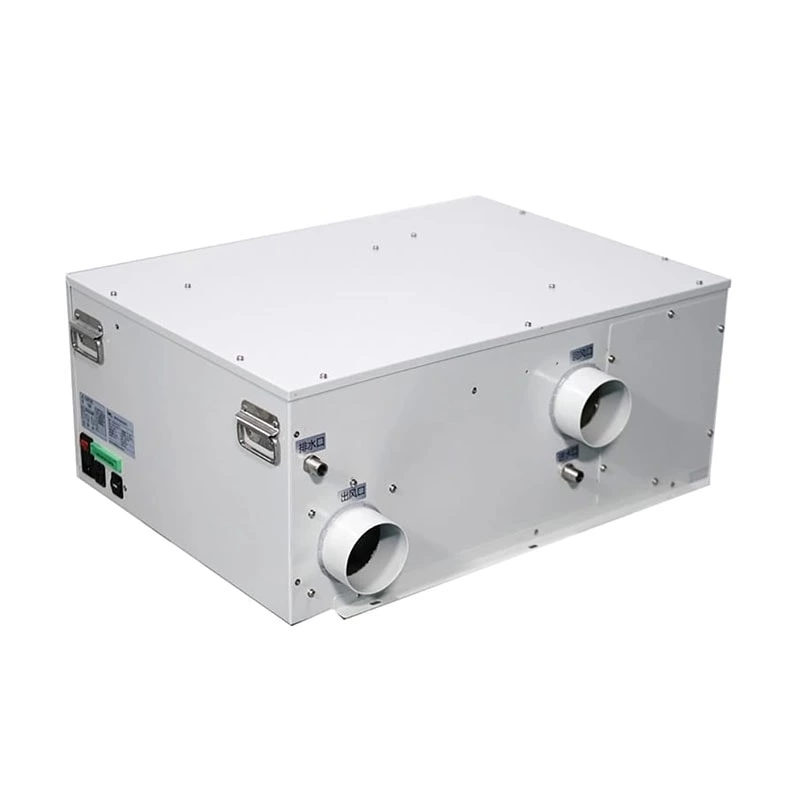Analyze The Causes And Treatment Methods Of Compressor Frosting
One. Frosting at the compressor return port indicates that the compressor return gas temperature is too low. So what conditions will cause the compressor return gas temperature to be too low?
We all know that if the volume and pressure of refrigerant of the same quality are changed, the temperature will behave differently. That is, if the liquid refrigerant absorbs more heat, the refrigerant of the same quality will exhibit higher pressure, temperature, and volume. If there is less heat, the pressure, temperature, and volume will be lower.
That is to say, if the return air temperature of the compressor is low, the return air pressure will generally be low and the amount of refrigerant of the same volume will be high at the same time. The root cause of this situation is that the refrigerant flowing through the evaporator cannot fully absorb itself and expand to a predetermined pressure. The heat required for the temperature value results in a relatively low temperature, pressure There are two causes of this problem:
- The throttle valve’s liquid refrigerant supply is normal but the evaporator cannot absorb heat and supply refrigerant for expansion.
- The evaporator absorbs heat and works normally, but the throttle valve has too much refrigerant supply, that is, too much refrigerant flow. We usually understand it as too much fluorine, which means too much fluorine can also cause low pressure.and volume value of the return air.
Two. The return air of the compressor is frosted due to the lack of fluorine.
1. Due to the extremely low flow rate of the refrigerant, the expandable space will begin to expand after the refrigerant flows out of the rear end of the throttle valve. Most of us see frosting on the dispensing head at the rear end of the expansion valve, often due to lack of fluorine or insufficient flow of the expansion valve. Yes, too little refrigerant expansion will not utilize the entire evaporator area, and will only form a low temperature in the evaporator. In some areas, due to the small amount of refrigerant, the rapid expansion will cause local temperatures to be too low, and evaporator frosting will occur.
After partial frosting, due to the heat insulation layer formed on the surface of the evaporator and the heat transfer in this area is low, the refrigerant expands and moves to other areas, gradually frosting or icing occurs on the entire evaporator, and the entire evaporator forms heat insulation. layer, then the expansion will spread to the compressor return pipe, causing the compressor return air to frost.
2. Due to the low amount of refrigerant and low evaporation pressure of the evaporator, the evaporation temperature will be low, which will also gradually cause condensation on the evaporator to form a heat insulation layer and shift the expansion point to the return air of the compressor, causing frost on the return air of the compressor. Both of the above two points will show that the evaporator is frosted before the return air from the compressor is frosted.
In fact, in most cases, to deal with the phenomenon of frost, just adjust the hot gas bypass valve. The specific method is to open the rear end cover of the hot gas bypass valve, and then use a No. 8 hexagonal wrench to turn the adjusting nut inside clockwise. The adjustment process does not require It is too fast. Generally, it is paused after turning about half a circle, and the system is allowed to run for a period of time to check the frosting situation before deciding whether to continue to adjust. Wait until the operation is stable and the frost on the compressor disappears before tightening the end cover.
Three. Cylinder head frosting (in severe cases, crankcase frosting) is always caused by a large amount of wet steam or refrigerant being sucked into the compressor. The main reasons for this are:
- The opening of the thermal expansion valve is adjusted too large, and the temperature sensing package is installed incorrectly or is loosely fixed, causing the temperature felt to be too high and causing the valve core to open abnormally.
- The liquid supply solenoid valve leaks or the expansion valve is not closed tightly during shutdown, causing a large amount of refrigerant liquid to accumulate in the evaporator before starting. The temperature relay is used in conjunction with the solenoid valve to control the storage temperature.
- When starting the compressor, the suction stop valve is opened too wide or too early.




